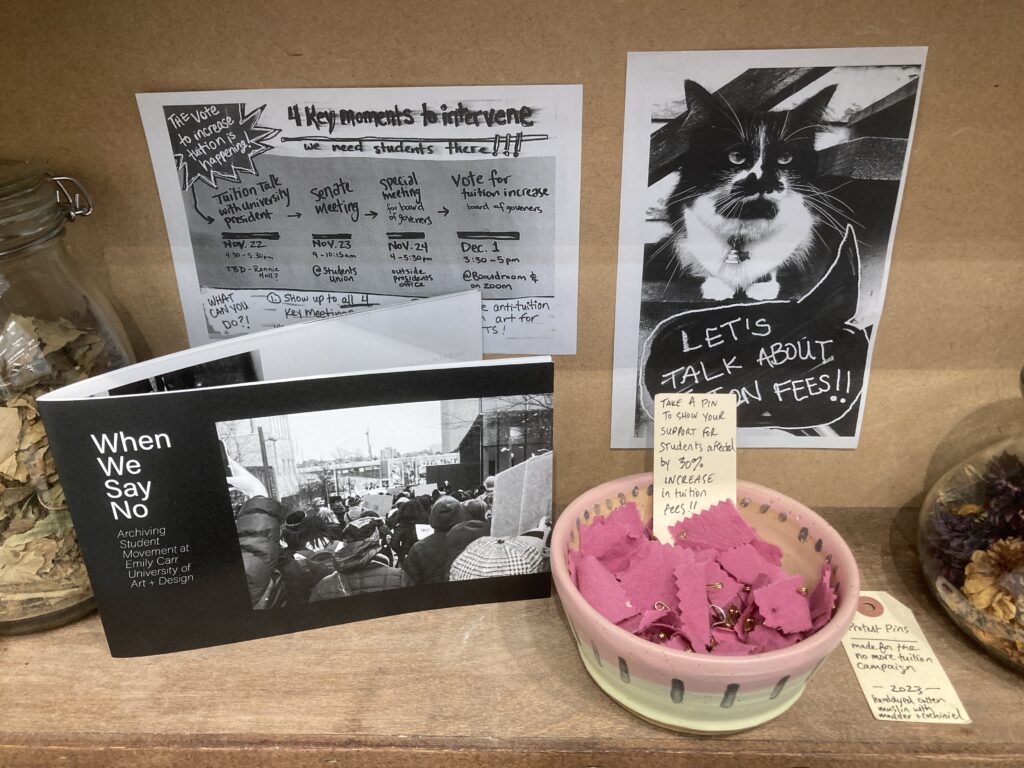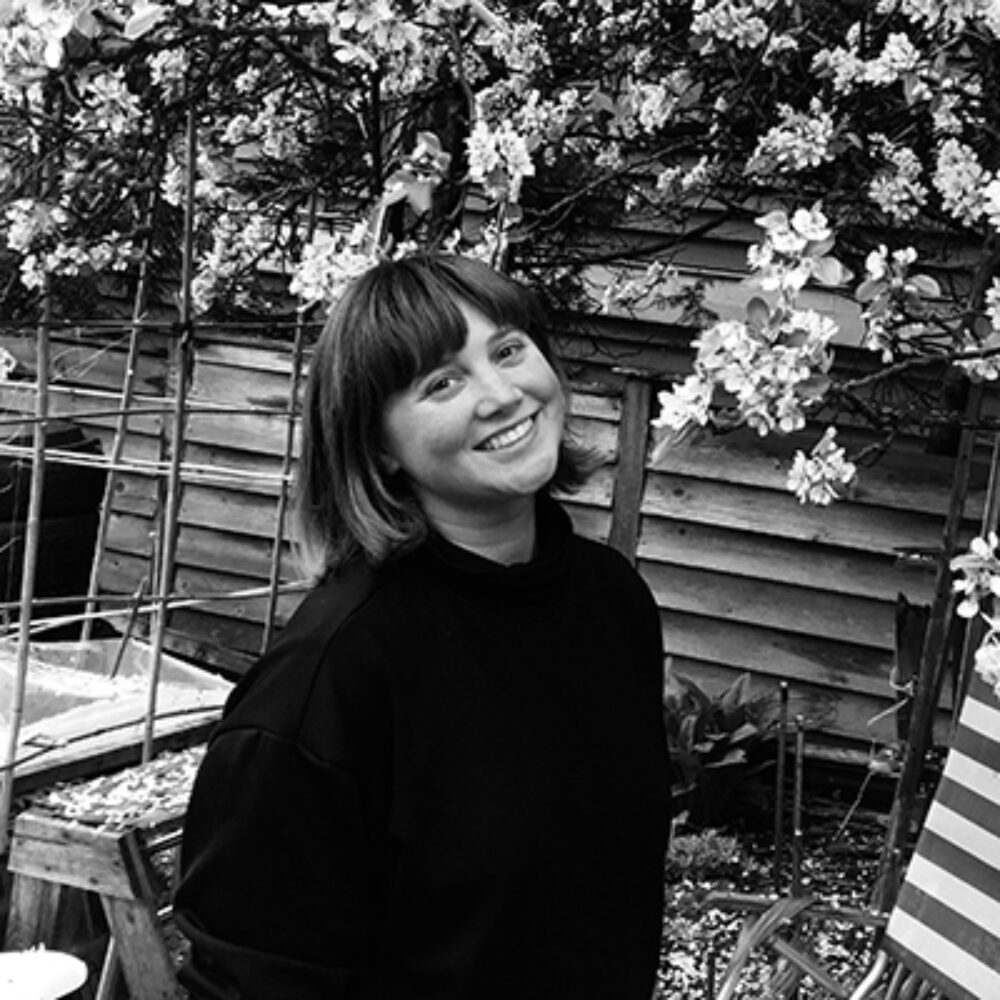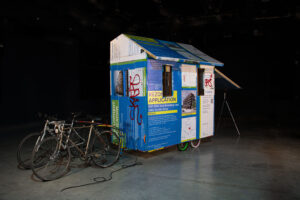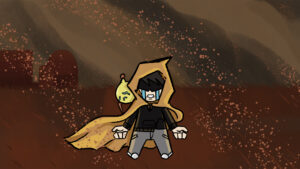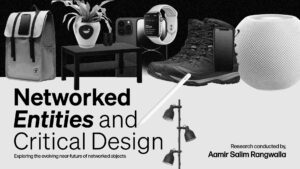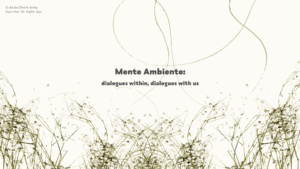Sensory Sensemaking
Melanie Camman
See it On Campus: Level 2
Visitor InfoSensory Sensemaking is located outside the AGP - Aboriginal Gathering Place.
Live event: Weaving Dialogues | May 11, 5:00 pm
Any person of any age or experience level is invited to join me in conversation and weaving two matching pieces. Weaving will take place most afternoons from May 11th through to May 25th.
Award Recipient
WA Architects Ltd Master of Design Graduation Award
Hello Folks! Welcome to my online exhibition. To get the full experience I recommend coming to campus for the in-person experience where I have samples from my practice, two looms set up so that you can have the experience of weaving a community cloth, and where conversations and dialogues are already beginning to emerge. However, for those who cannot make it to the live show, lets see what we can do to give you a taste of Sensory Sensemaking.
A copy of my thesis publication can be downloaded here: Sensory Sensemaking
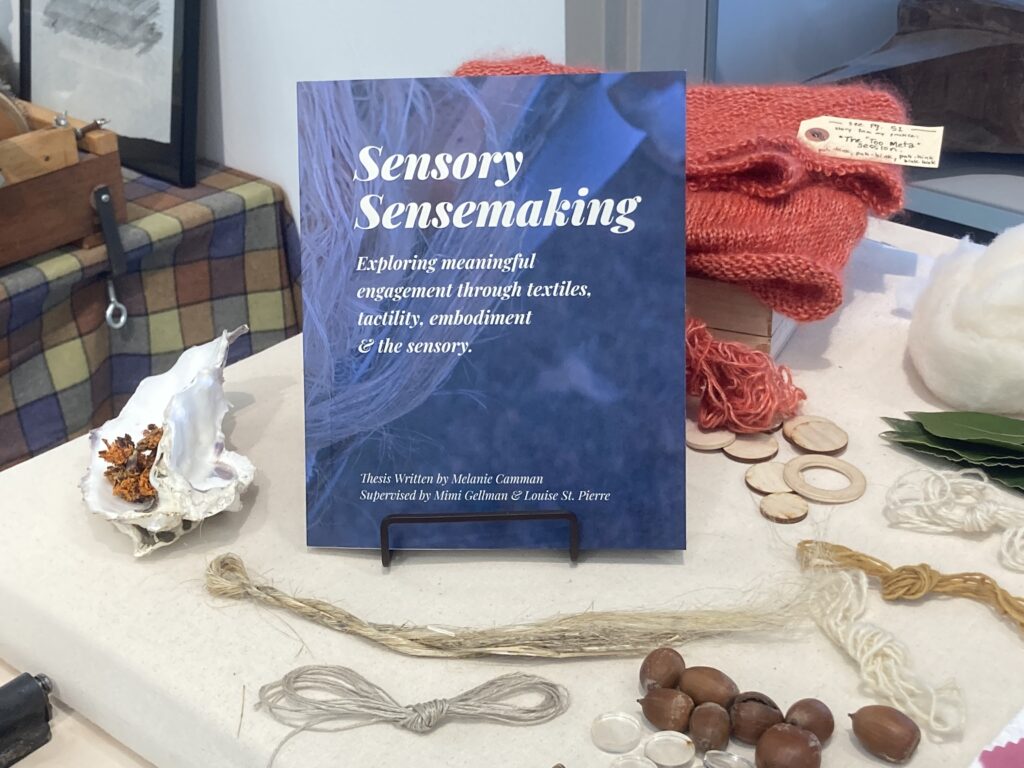
Warping the Loom
One warp is on. Join me at the show for a weaving experience and conversation. One loom is ready, the other will be warped during the opening and over the next few days.
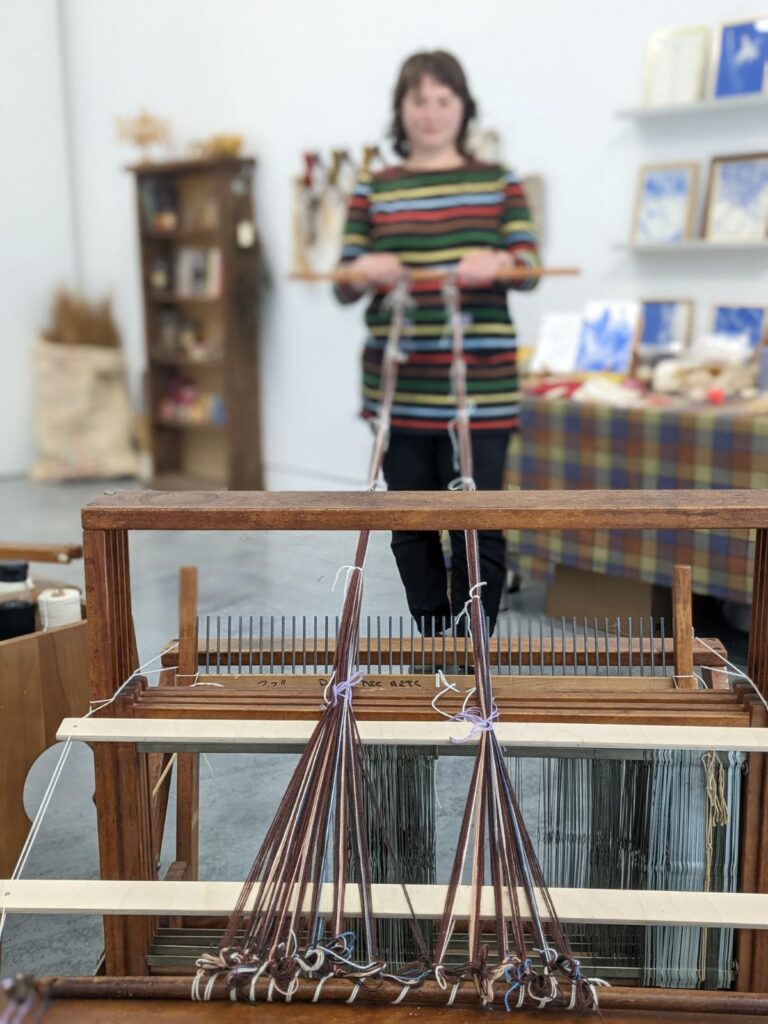
Weaving Conversations – Graduation Exhibition
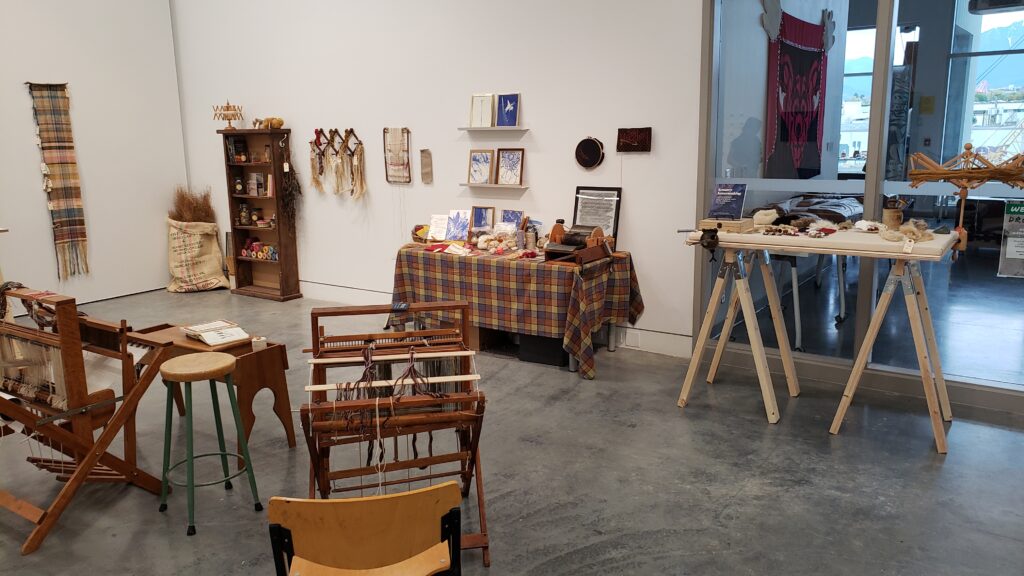
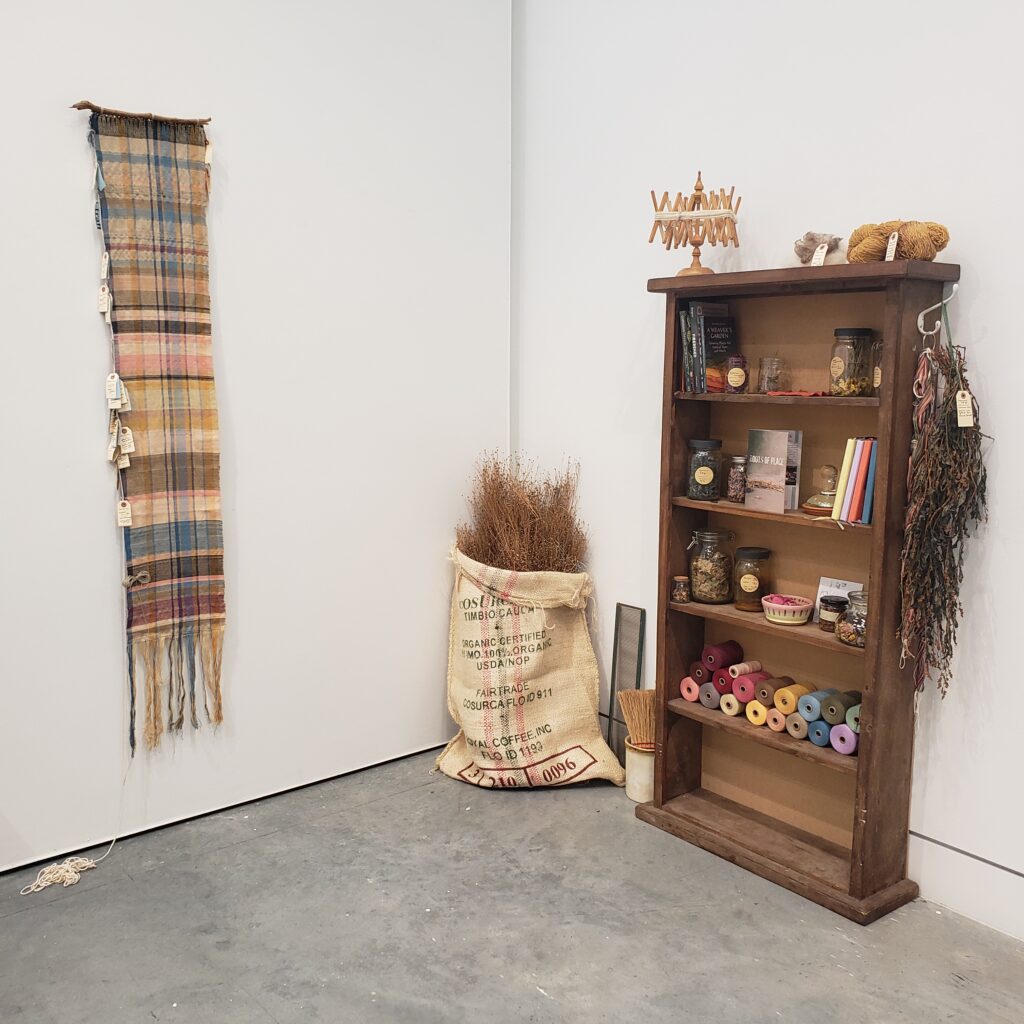
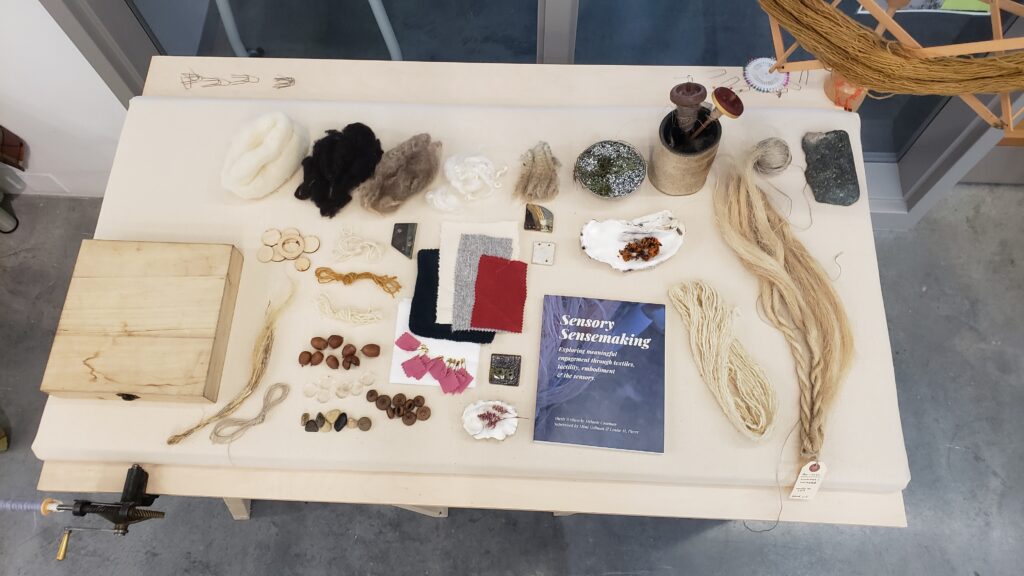
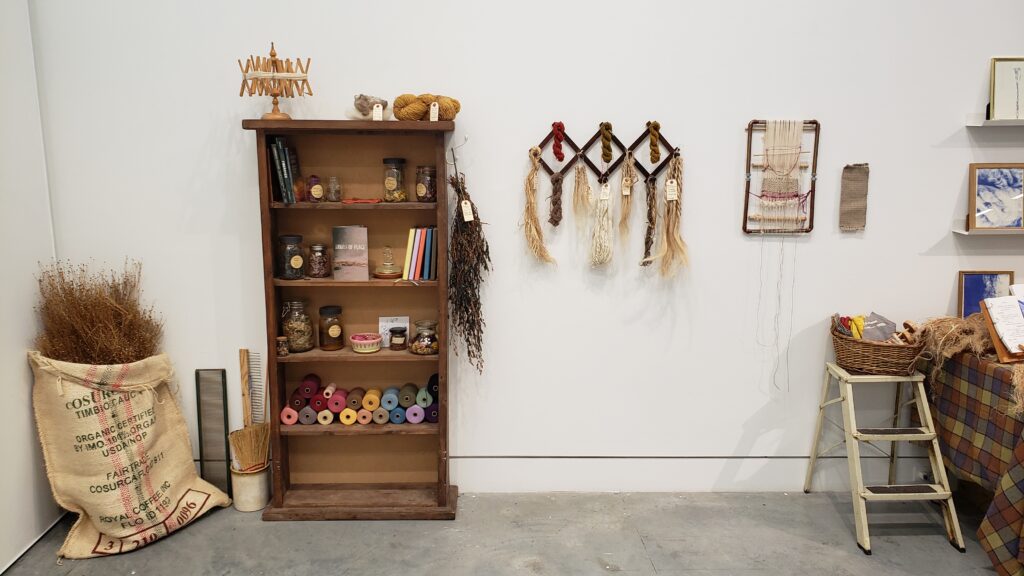

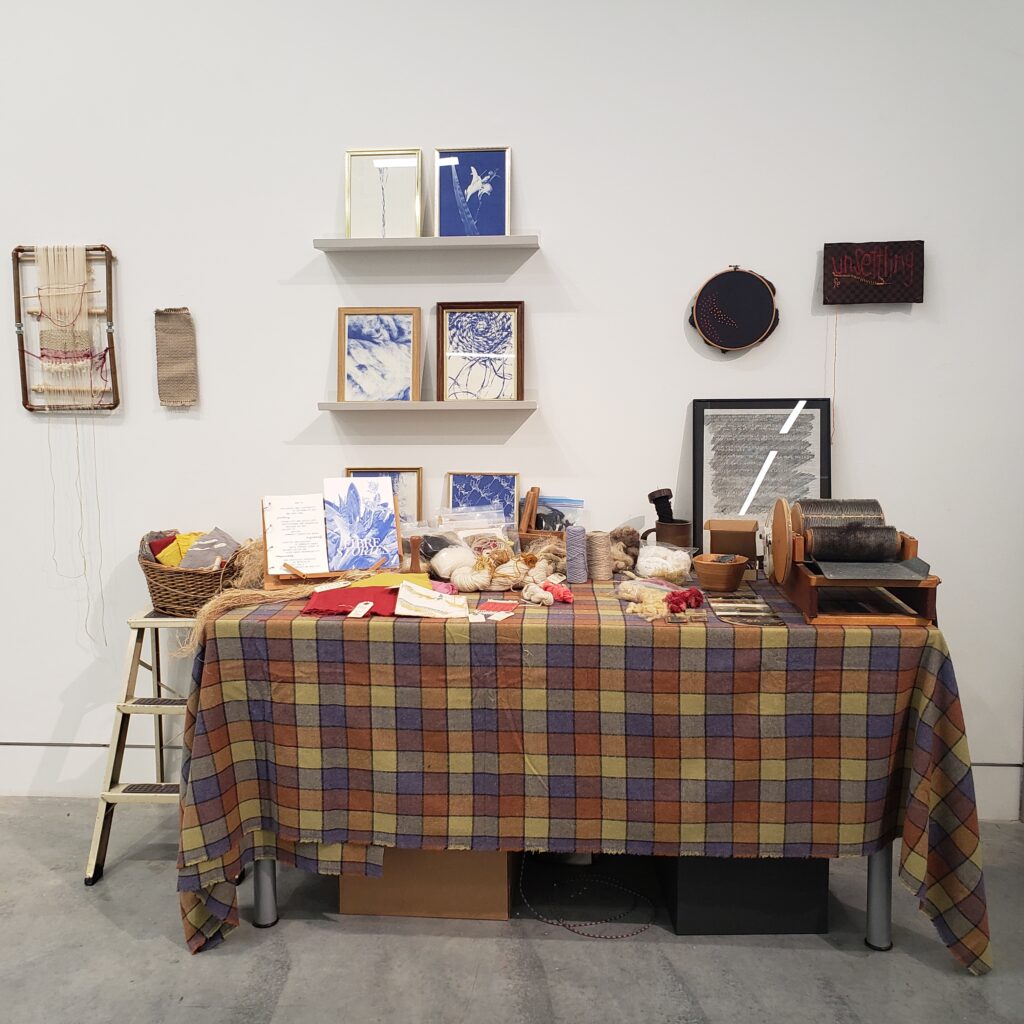
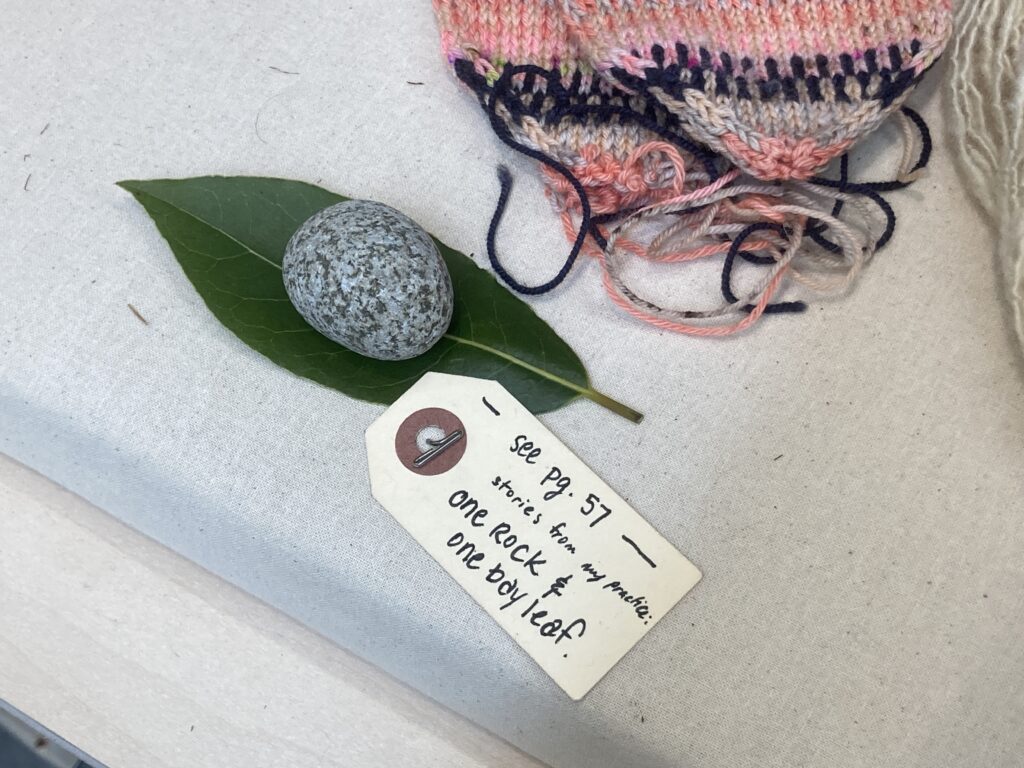
Weaving Conversations is the latest version of Sensory Sensemaking. Building on my experience weaving in the gallery space for the Roots of Place – Sustainable Materials Exposition, during the summer of 2022, I am excited to be warping two Dorset looms for the installation. Weaving in public allowed for many important conversations and relationships to grow and emerge. For this version I am creating an opportunity for people to weave alongside me, creating connection to cloths, conversations and a community throughout the duration of the exhibition.
Before we go further… Please take a moment to connect with your senses.
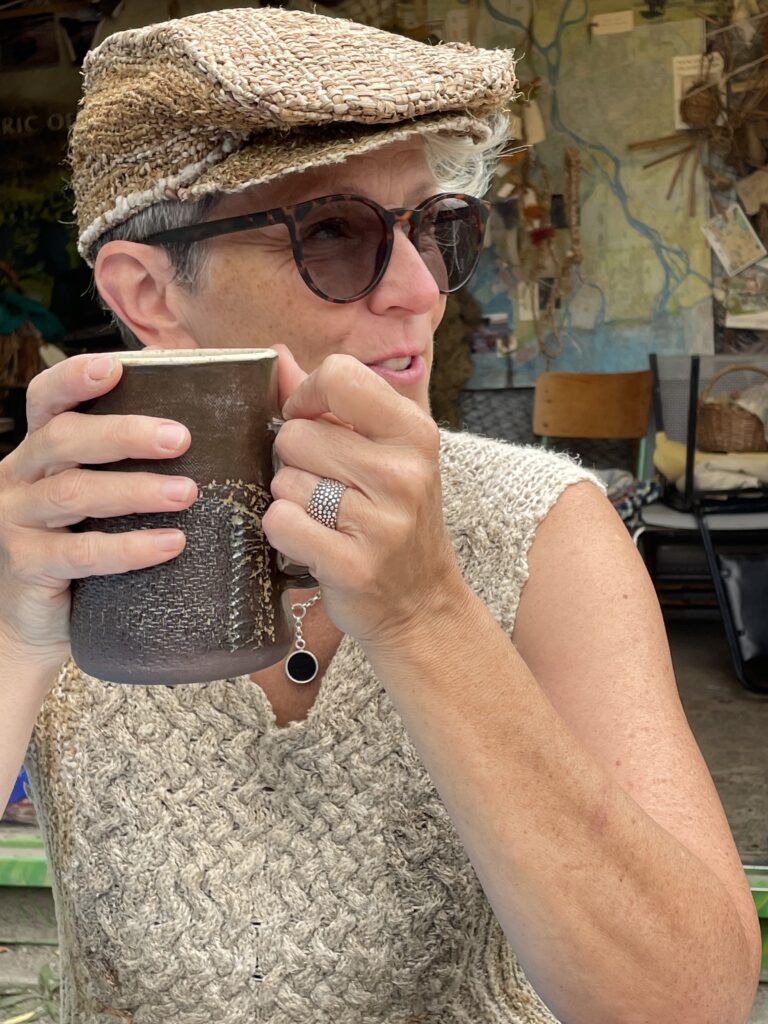
Note To Reader
To translate some of the tactile and sensory experiences to your digital experience, I recommend taking a moment to grab a warm cup of tea or coffee or a beverage of your choosing. Take a breath and notice what the air smells like around you. Perhaps you can light a candle or open a window. Place your hands on your lap, notice the feel of the fabrics you are wearing against your skin, it there anything you want to change? If it were me, I’d go grab a pair of comfy slippers or a warm blanket. Choose a spot to sit, do you want to sit in a bright warm light, or would you prefer a cozy location with ambient light? Take a moment to really stop and listen? What are the sounds you hear around you? What is the sound that is farthest from you? What are the sounds your own body is making? Okay, now that you have had a moment to connect with your surroundings, let me share some of my work with you.
Okay, so let’s get into it…
What is Sensory Sensemaking? Sensory Sensemaking is what emerged from my masters research into embodied and tactile practices and community engagement. Instead of a product or a solution I applied my design skills to creating interactions, experiences and relationships.
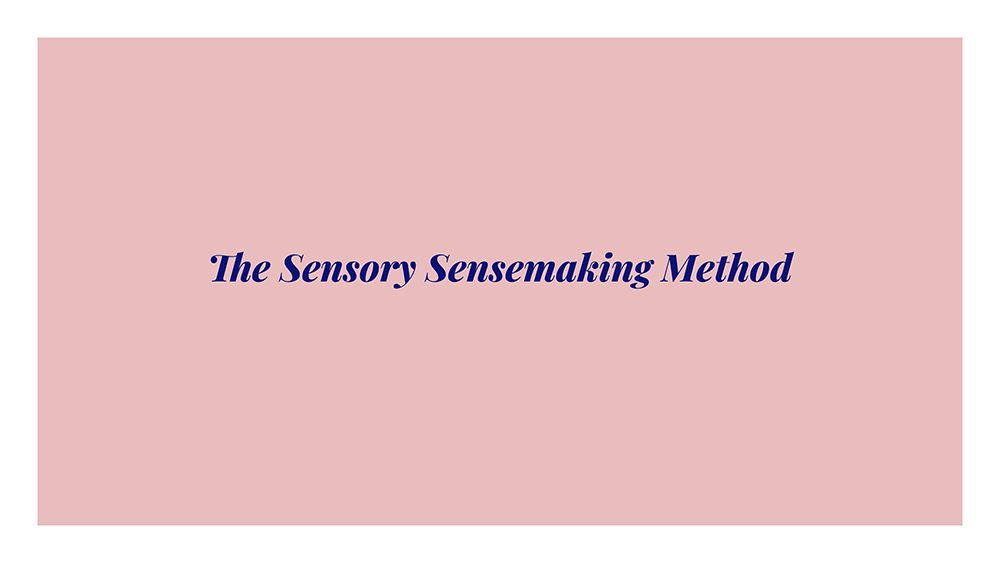
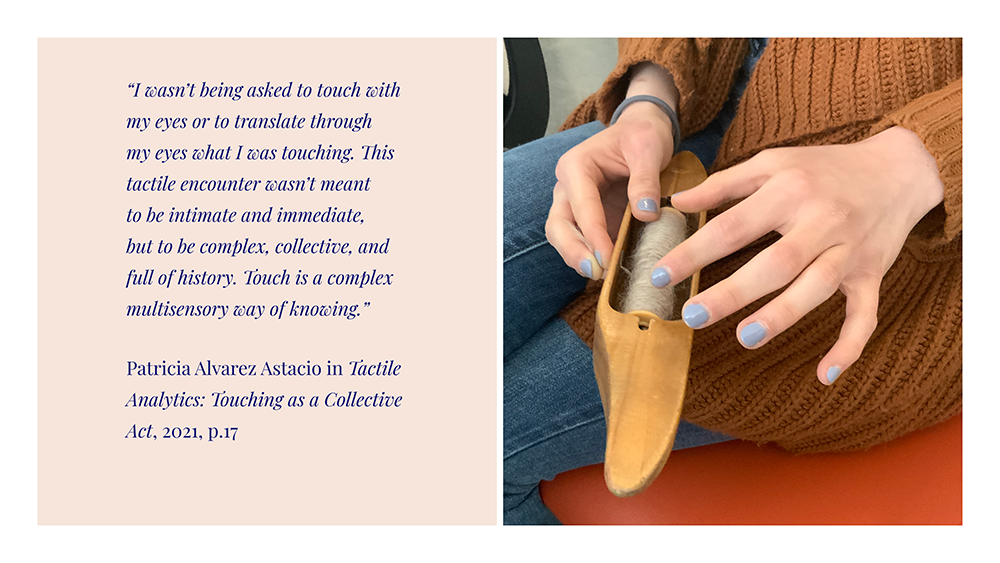
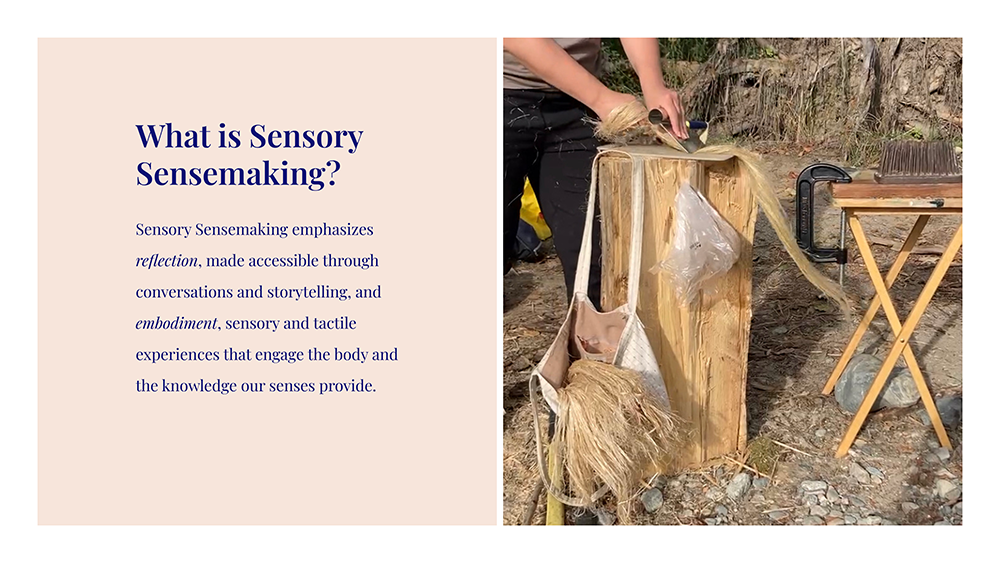
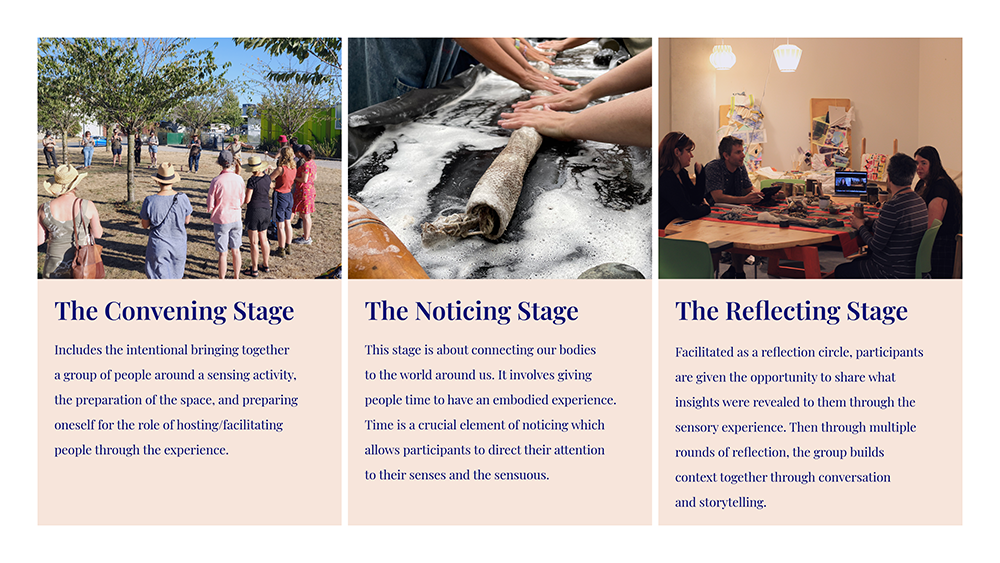
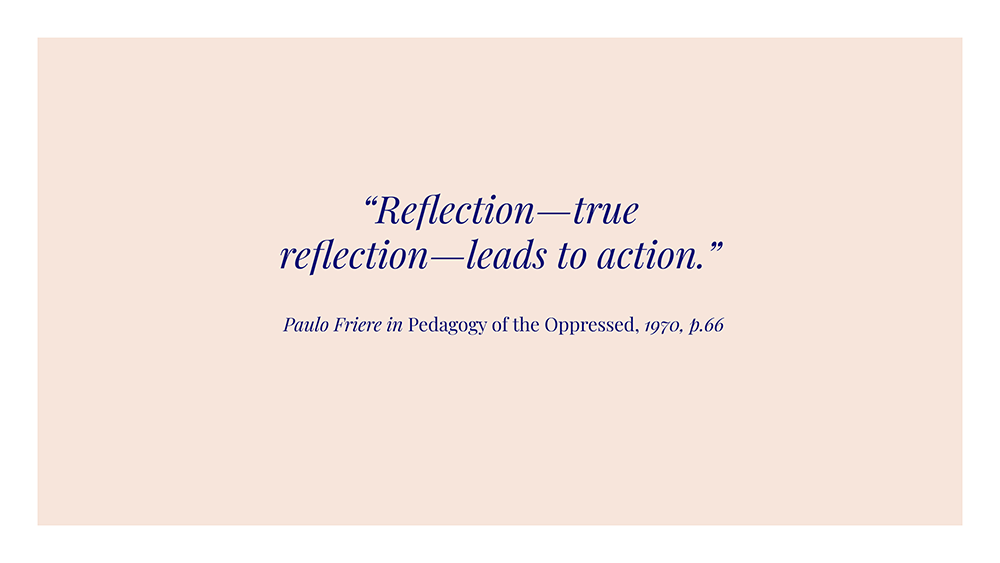
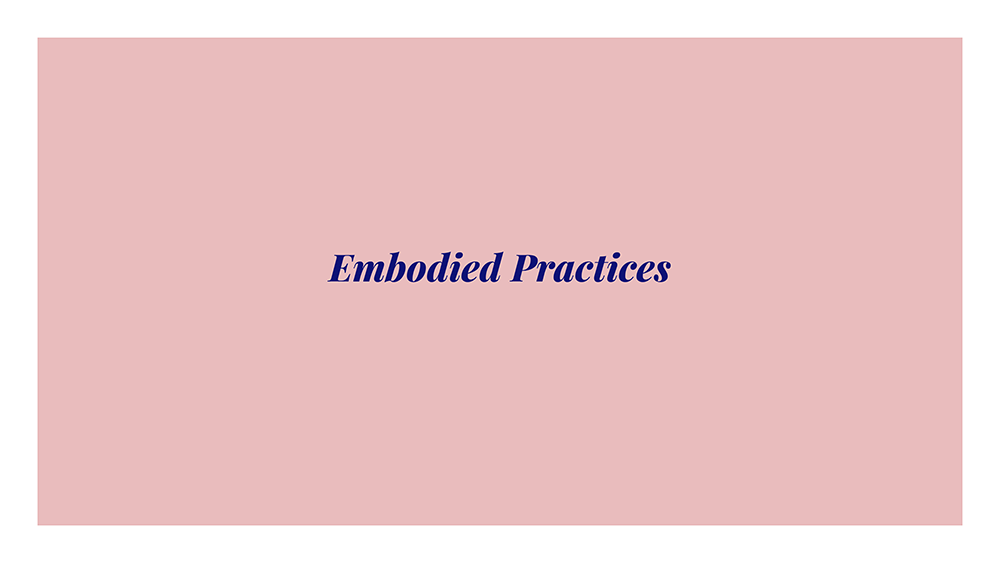
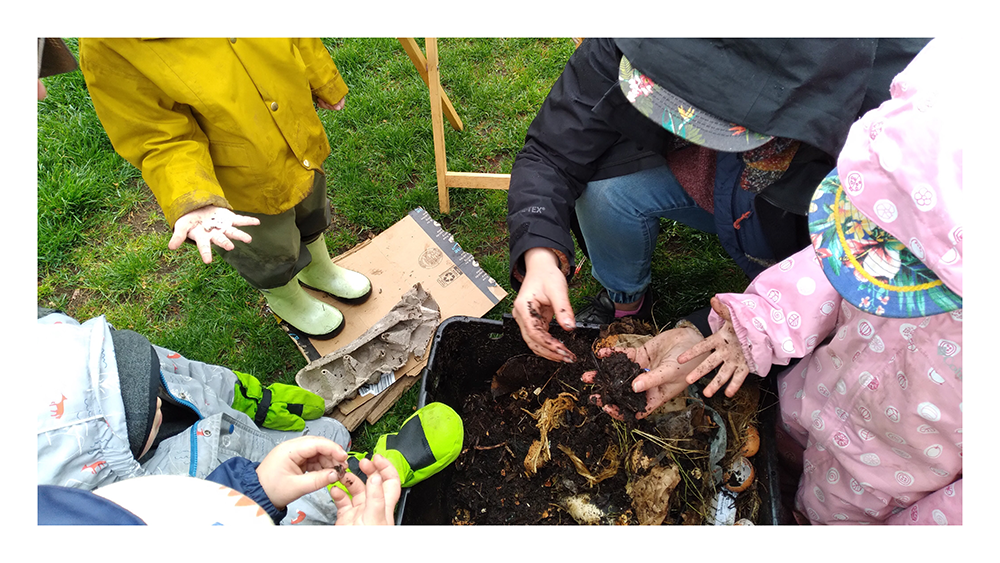
Whispering to Worms
My first experience with Sensory Sensemaking happened by accident. I was invited to share what I knew about composting and worms with 3 – 6 year olds, and to help set up their vermicomposters. We ended up making a worm dance, building a home for the worms, and talking about whether worms hear or not. Reflecting back on the experience young people might be the experts on Sensory Sensemaking.
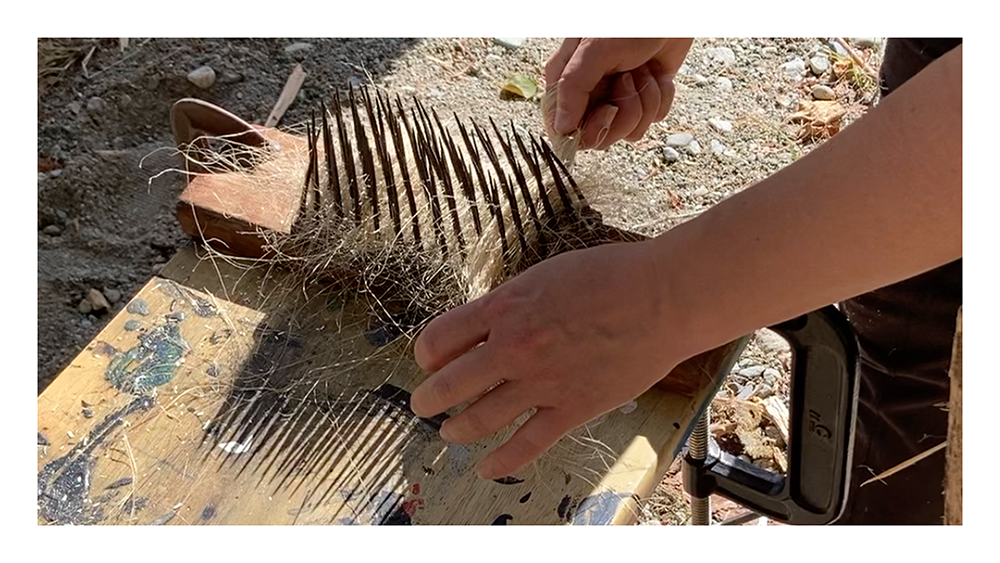
Processing Flax & Ancestral Cloth
I developed a special relationship with flax over the past several years. I have always appreciated the look and feel of flax against my skin. I grew it for the bees and because the seed pods are a great garden snack, but my appreciation for the plant grew as I learned the steps of harvesting, processing and spinning a linen that can be used for weaving or knitting. Each step – retting, breaking, scutching and hackling – requires skill and labor. I also learned more about how flax was a part of my family history and a technology of colonization.
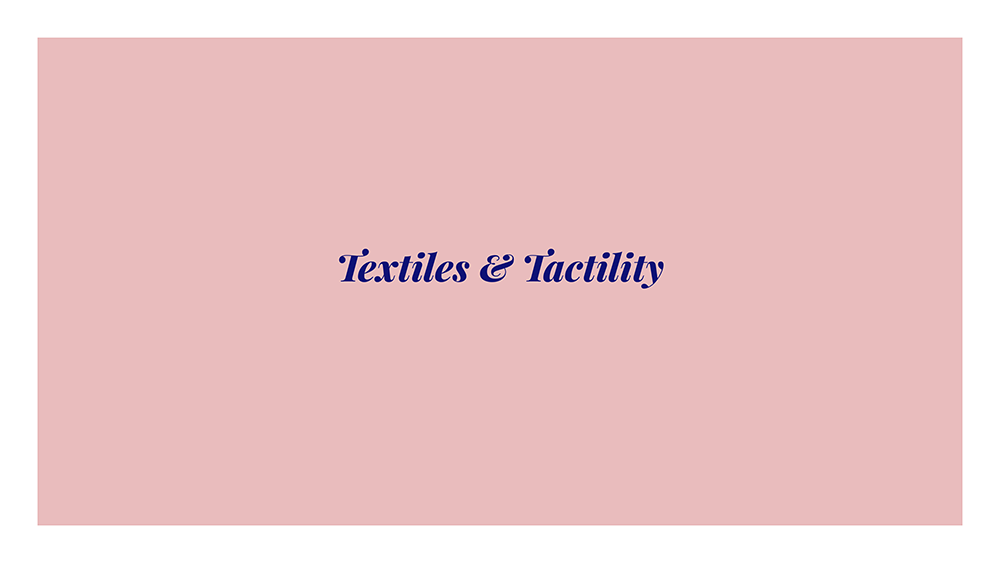
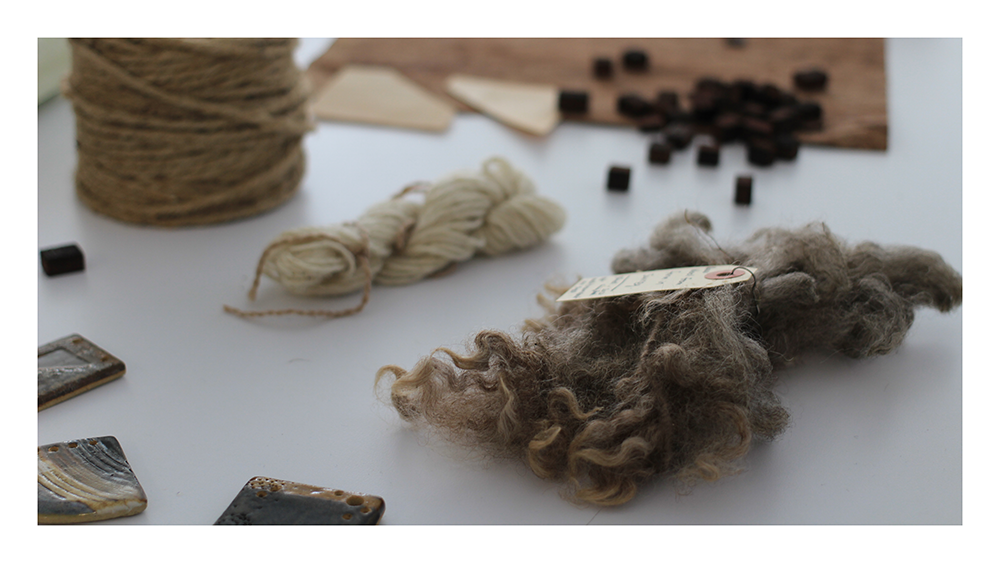

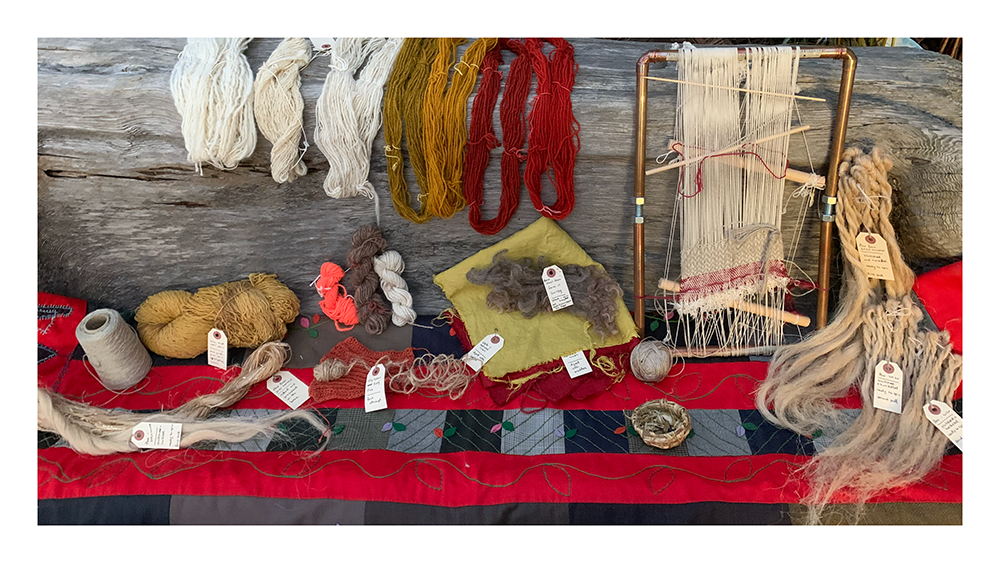
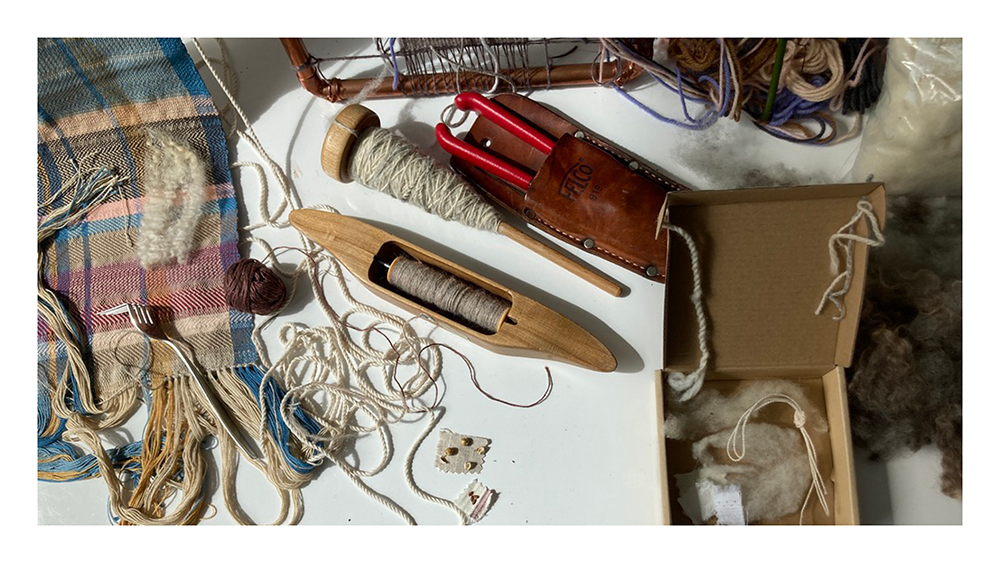
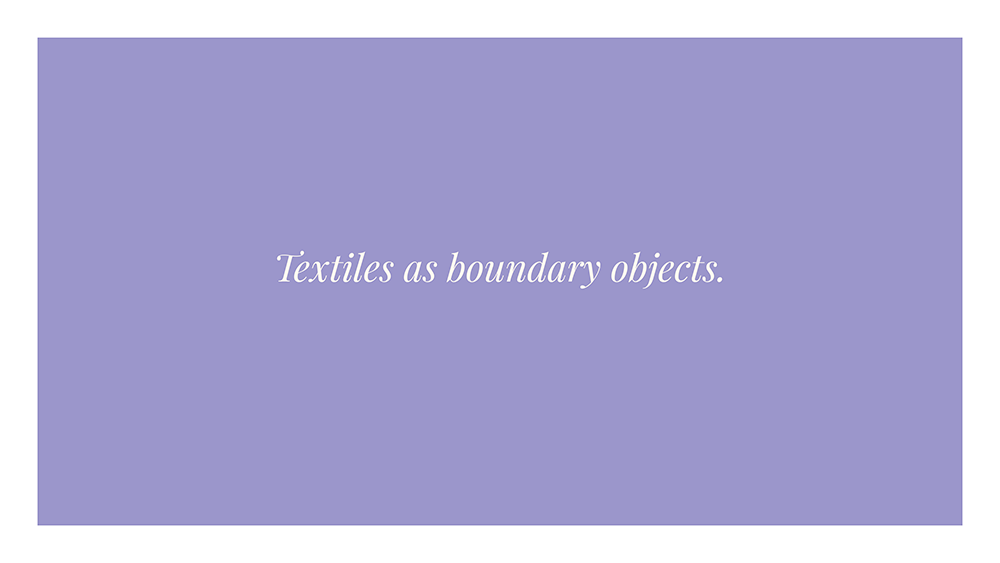
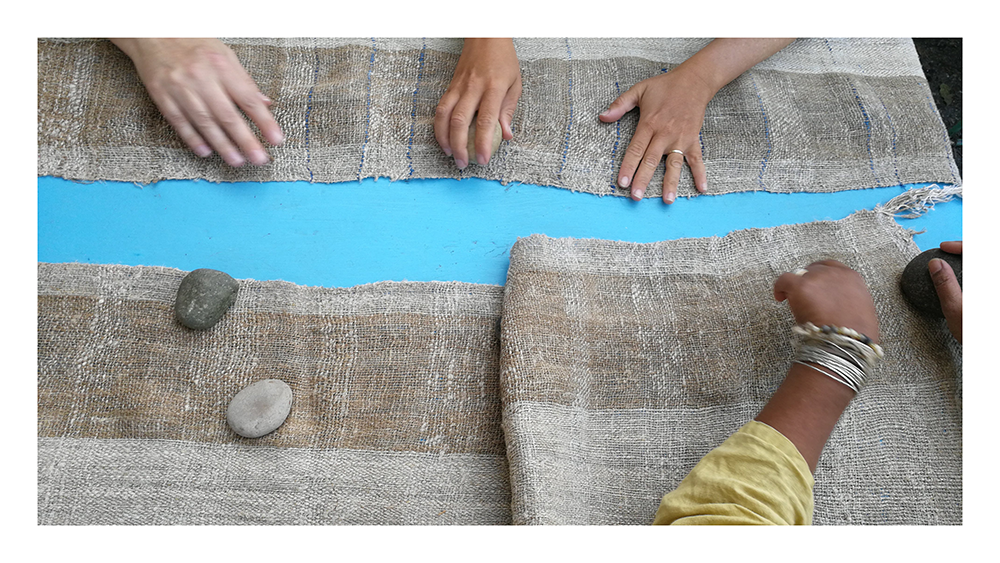
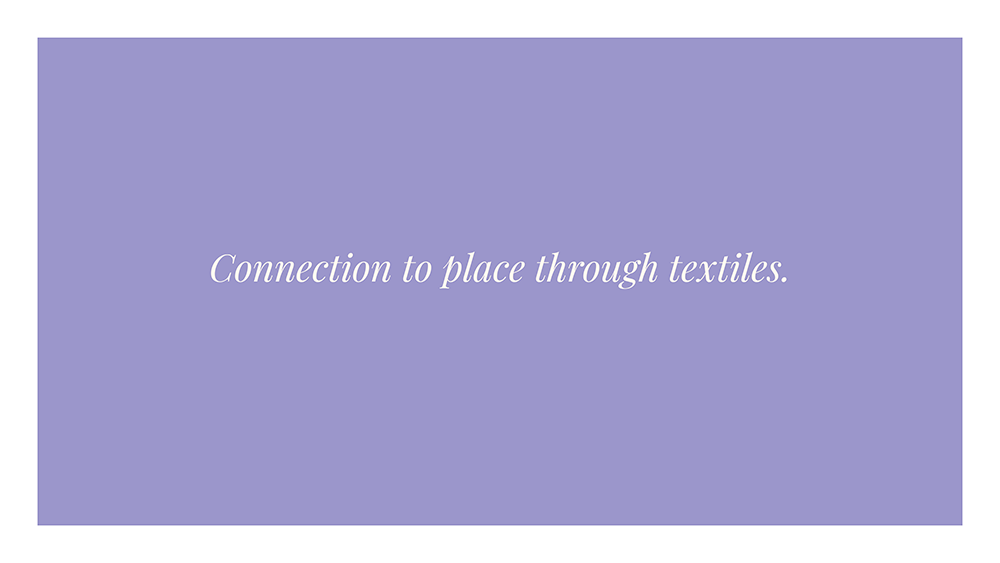
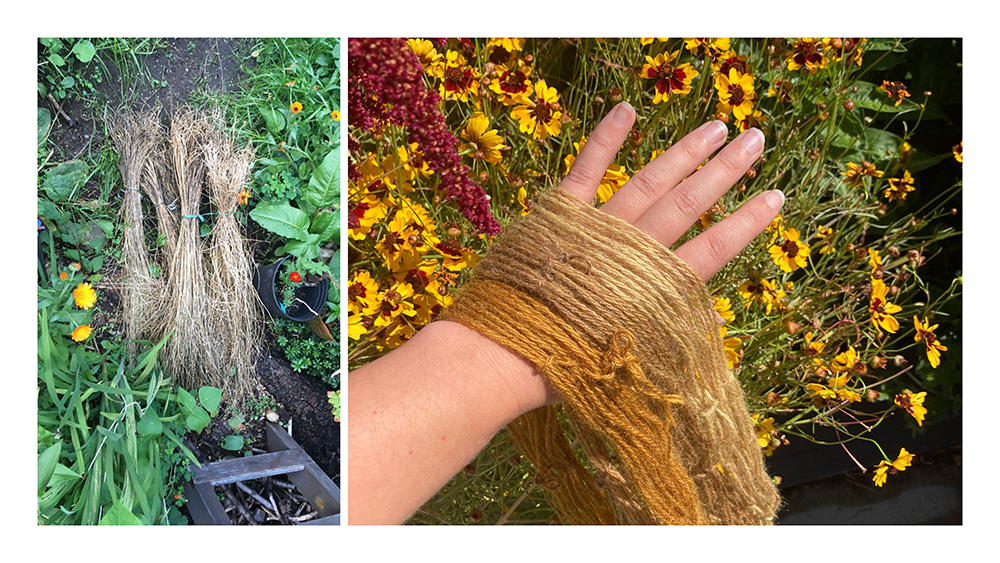
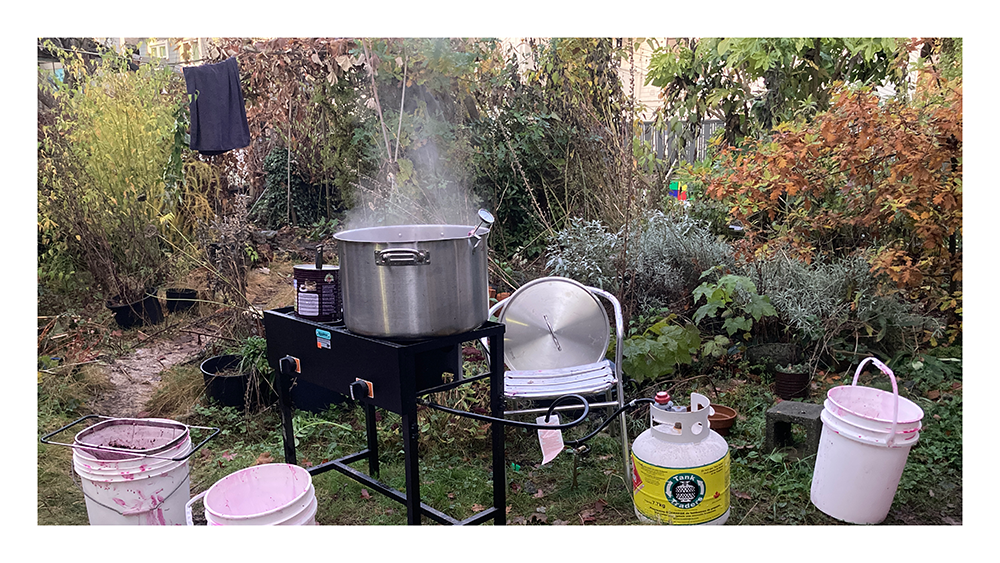
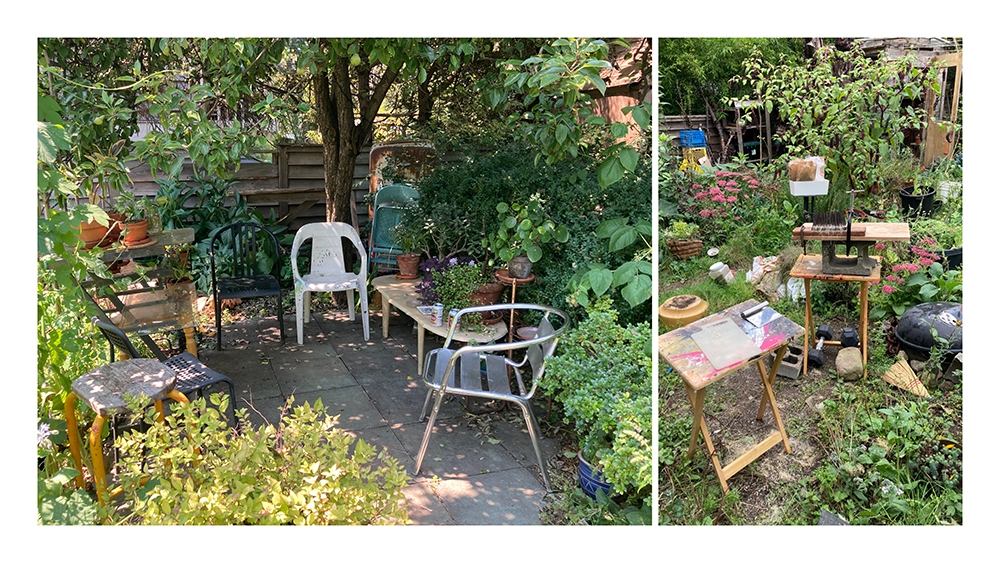
A Note on Activism and Community Engagement
My work with the students’ union was an important part of my time at Emily Carr. During my time here we saw a freeze on tuition rates, followed by an unprecedented increase of 10% and 30% for returning and incoming international students. While maintaining my studies I also worked with other students to organize, advocate and protest on behalf of all students. While doing so I tried to play to my strengths and find enjoyment in the comradery and work. This resulted in quick and dirty approaches, hand drawn posters, sticker votes on strategy and student engagement policies, cat photos for posters, zines and fliers providing information, and hand dyed protest pins to indicate support for students impacted by raising tuition fees!
